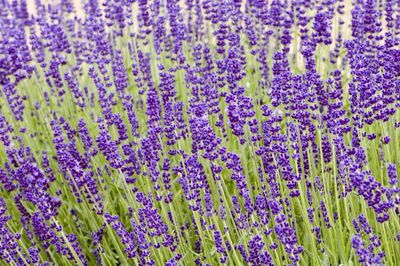Lavender Hidcote Info
Plants that provide outstanding color and scent, are edible, and attract pollinators are a win-win for the garden. Lavender Hidcote is one such beauty. It is also deer resistant, a bonus in certain areas of the country, and you can dry the flowers for long lasting, scented bouquets. Sunny, well-drained sites are perfect for growing lavender Hidcote. In a massed planting it makes an astounding display, but it stands out sweetly as part of an herb garden or even a mixed container. Most of us are familiar with English and French lavenders, but what is lavender Hidcote? It belongs to the English group, which is probably the most well known. These are native to the Mediterranean but Hidcote is the hardiest of the English cultivars. It is a true lavender that has been cultivated for its oil and dried flowers. Some interesting lavender Hidcote info indicates that the genus name, Lavandula, means “I wash” and the epithet, angustifolia, refers to the narrow leaves. Lavender Hidcote will only grow up to 20 inches tall (50 cm.) but it is packed with bright purple-blue flowers. The needle-like foliage is grayish green, providing an amazing backdrop to the blooms. The summer blooms are attractive to numerous pollinating insects, including butterflies.
How to Grow Hidcote Lavender
Lavender needs well-draining soil, preferably slightly sandy and a sunny location. Hidcote cannot tolerate humidity and will not perform well in areas that are overly moist. In areas with higher humidity, provide plenty of ventilation. The plant will grow well in rockeries, along borders and paths, or as stand-alone specimens. When planting, the crown of the plant should rest just at the surface of the soil. Use organic mulch in drier regions and a rock mulch in areas with humidity. During its first year, provide plenty of water so the plant can establish a strong root system.
Caring for Lavender Hidcote
To promote denser plants when young, shear back the foliage in early spring. Thereafter, every three years cut the plant back in spring to promote new stems and growth. Use a general purpose fertilizer annually in early spring. Lavender has few pest problems and its only disease issues are fungal. Leaf spot and root rot are the primary culprits, especially in wet regions. You can use the aromatic leaves in perfumes, potpourri, as a seasoning, in sachets, or as part of everlasting flower bouquets. This is a lovely versatile plant, perfect for most gardens.
